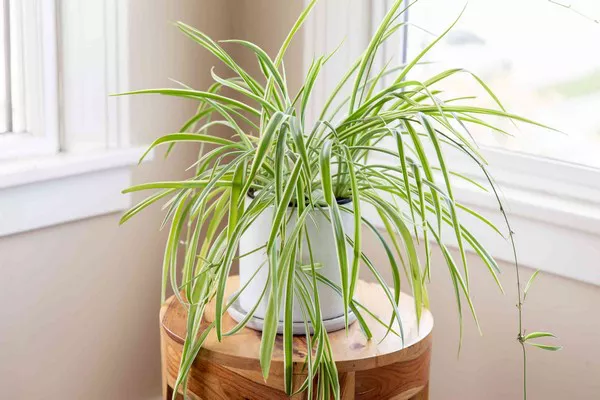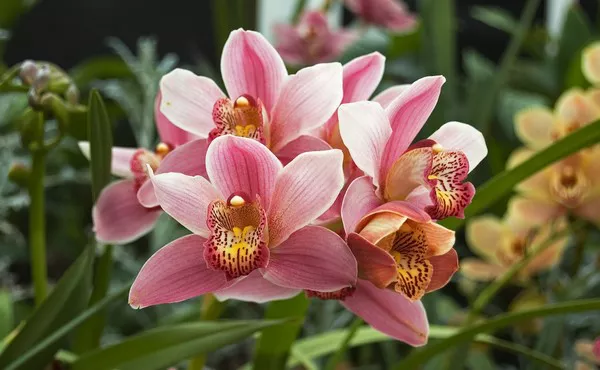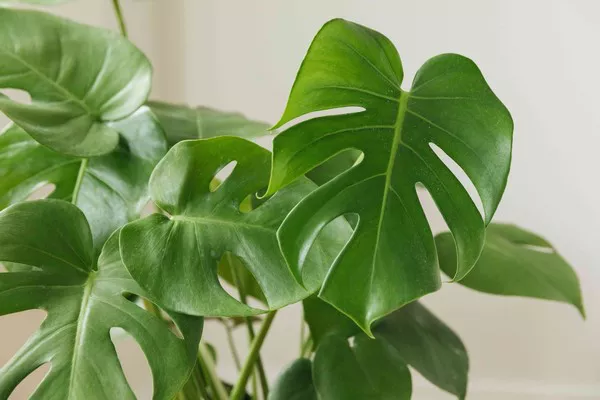Cactus flowers, with their vibrant colors and intricate shapes, captivate the imagination with their stunning beauty and resilience in harsh desert environments. Among the myriad species of cacti that dot arid landscapes around the world, some produce exceptionally large and striking flowers that stand out for their size and magnificence. In this article, we embark on a journey to discover the biggest cactus flowers in the world, exploring their diverse forms, ecological significance, and cultural symbolism.
Cacti, belonging to the family Cactaceae, are renowned for their ability to thrive in arid and semiarid regions with minimal water availability. These succulent plants have adapted to survive in harsh desert environments by storing water in their fleshy stems and reducing water loss through specialized adaptations such as waxy coatings and reduced leaf surfaces. While cacti are known for their spiny stems and distinctive shapes, they also produce some of the most spectacular flowers in the plant kingdom.
Anatomy and Physiology of Cactus Flowers
Cactus flowers exhibit a wide range of shapes, sizes, colors, and fragrances, reflecting the diverse ecological roles and reproductive strategies of different species. Despite their varied appearances, cactus flowers share several common characteristics, including:
Succulent petals: Cactus flowers typically have thick, fleshy petals that help them retain moisture and withstand arid conditions. These succulent petals often come in vibrant hues of red, pink, orange, yellow, and white, attracting pollinators such as bees, butterflies, birds, and bats.
Tubular or funnel-shaped corollas: Many cactus flowers have tubular or funnel-shaped corollas that are adapted to accommodate the long mouthparts of their pollinators. These specialized shapes facilitate efficient pollen transfer and ensure successful pollination in desert environments where resources are scarce.
Showy stamens and pistils: Cactus flowers often have prominent stamens and pistils that are visible to pollinators and humans alike. These reproductive structures produce pollen and ovules, respectively, and play essential roles in the fertilization process that leads to seed production and fruit formation.
Ecological Importance of Cactus Flowers
Cactus flowers play crucial ecological roles in desert ecosystems, serving as a vital food source for pollinators and contributing to the reproductive success of cacti and other plant species. Pollinators such as bees, butterflies, moths, hummingbirds, and bats rely on cactus flowers for nectar, pollen, and other resources, making them keystone species in desert food webs.
Pollination ecology: Cactus flowers have evolved specialized adaptations to attract specific pollinators and ensure successful fertilization. Some cacti rely on nocturnal pollinators such as moths and bats, while others are pollinated by diurnal insects and birds. The mutualistic relationships between cacti and their pollinators are essential for maintaining biodiversity and ecosystem stability in desert habitats.
Seed dispersal: After pollination, cactus flowers develop into fruits that contain seeds enclosed in fleshy pulp or dry capsules. These fruits are often consumed by animals such as birds, rodents, and reptiles, which disperse the seeds in their feces or through mechanical means. Seed dispersal plays a vital role in the dispersal of cacti and other plant species and contributes to the regeneration and colonization of new habitats.
Cultural Significance of Cactus Flowers
Cactus flowers hold cultural significance in many societies around the world, where they are revered for their beauty, resilience, and symbolic meanings. From indigenous cultures in the Americas to modern-day gardeners and botanical enthusiasts, cactus flowers have inspired awe and admiration for their unique adaptations and aesthetic appeal.
Indigenous traditions: In indigenous cultures of the Americas, cactus flowers are often associated with fertility, abundance, and spiritual renewal. Native peoples such as the Tohono O’odham, Huichol, and Navajo use cactus flowers in traditional ceremonies, rituals, and medicinal practices, honoring their connection to the land and the natural world.
Horticultural appreciation: In modern times, cactus flowers have become popular ornamental plants prized for their exotic beauty and low-maintenance requirements. Cactus enthusiasts and collectors cultivate rare and unusual species of cacti for their spectacular flowers, which adorn gardens, greenhouses, and botanical collections around the world.
Symbolism and metaphor: Cactus flowers are often used as symbols of endurance, resilience, and adaptability in literature, art, and popular culture. Their ability to thrive in harsh desert environments serves as a metaphor for overcoming adversity and finding beauty in unexpected places. Cactus flowers are also associated with love, passion, and transformation, symbolizing the power of renewal and growth in the face of challenges.
The Five Biggest Cactus Flowers in the World
Now, let’s explore the five biggest cactus flowers in the world, each renowned for its size, beauty, and ecological significance:
- Saguaro Cactus Flower (Carnegiea gigantea)
- Night-blooming Cereus (Hylocereus species)
- Queen of the Night (Selenicereus grandiflorus)
- Barrel Cactus Flower (Ferocactus species)
- Hedgehog Cactus Flower (Echinocereus species)
1: Saguaro Cactus Flower (Carnegiea gigantea)
The saguaro cactus (Carnegiea gigantea) is an iconic symbol of the Sonoran Desert, known for its towering stature, slow growth, and spectacular flowers. Saguaro cacti produce large white flowers that bloom in spring and early summer, attracting pollinators such as bats, bees, and birds.
Size: The flowers of the saguaro cactus are among the largest in the cactus family, measuring up to 4 to 6 inches (10 to 15 centimeters) in diameter. These impressive blossoms feature numerous creamy-white petals arranged in a star-shaped pattern around a central disk of yellow stamens and pistils.
Blooming period: Saguaro cactus flowers typically bloom for a few days in late spring or early summer, coinciding with the onset of the monsoon season in the Sonoran Desert. The timing of flowering is synchronized with the activity of nocturnal pollinators such as bats, which visit the flowers under the cover of darkness to feed on nectar and pollen.
Ecological significance: Saguaro cactus flowers play a crucial role in the reproductive success of saguaro cacti and other plant species in the Sonoran Desert. The nectar-rich flowers provide a vital food source for pollinators such as bats, bees, and birds, which facilitate cross-pollination and seed production. The fruits that develop from pollinated flowers are consumed by wildlife such as birds, rodents, and desert tortoises, which disperse the seeds and contribute to the dispersal and germination of new saguaro plants.
2: Night-blooming Cereus (Hylocereus species)
The night-blooming cereus, also known as dragon fruit or pitaya, is a group of cactus species native to tropical and subtropical regions of the Americas, Asia, and Australia. These cacti produce large, fragrant flowers that bloom only at night, attracting nocturnal pollinators such as moths and bats.
Size: The flowers of night-blooming cereus species can vary in size depending on the species and variety, with some cultivars producing blooms as large as 8 to 12 inches (20 to 30 centimeters) in diameter. These spectacular flowers often have intricate shapes and vibrant colors, ranging from white and pink to red and yellow.
Blooming period: Night-blooming cereus flowers typically bloom for one night only, releasing their sweet fragrance and attracting nocturnal pollinators such as moths and bats. The flowers often open shortly after sunset and close by dawn, withering away after pollination occurs.
Ecological significance: Night-blooming cereus flowers play a crucial role in the reproductive success of these cacti and other plant species in tropical and subtropical ecosystems. The flowers provide a rich source of nectar and pollen for nocturnal pollinators such as moths and bats, which visit the flowers under the cover of darkness to feed and transfer pollen between individuals. The fruits that develop from pollinated flowers are consumed by animals such as birds, bats, and mammals, which disperse the seeds and contribute to the regeneration and colonization of new habitats.
3: Queen of the Night (Selenicereus grandiflorus)
The queen of the night, also known as the vanilla cactus or moonflower, is a species of epiphytic cactus native to Central and South America. This nocturnal bloomer produces large, fragrant flowers that open only at night, attracting nocturnal pollinators such as moths and bats.
Size: The flowers of the queen of the night cactus are among the largest in the cactus family, measuring up to 8 to 12 inches (20 to 30 centimeters) in diameter. These magnificent blossoms often have pure white petals and a sweet fragrance that fills the night air, attracting pollinators from afar.
Blooming period: The queen of the night cactus typically blooms for one night only, releasing its intoxicating fragrance and attracting nocturnal pollinators such as moths and bats. The flowers often open shortly after sunset and close by dawn, withering away after pollination occurs.
Ecological significance: The queen of the night cactus plays a crucial role in the reproductive success of epiphytic cacti and other plant species in tropical and subtropical ecosystems. The flowers provide a rich source of nectar and pollen for nocturnal pollinators such as moths and bats, which visit the flowers under the cover of darkness to feed and transfer pollen between individuals. The fruits that develop from pollinated flowers are consumed by animals such as birds, bats, and mammals, which disperse the seeds and contribute to the dispersal and germination of new plants.
4: Barrel Cactus Flower (Ferocactus species)
The barrel cactus is a group of cactus species native to the deserts of North and Central America, known for their cylindrical shape and spiny stems. Barrel cacti produce large, showy flowers that bloom in spring and summer, attracting pollinators such as bees, butterflies, and birds.
Size: The flowers of barrel cactus species can vary in size depending on the species and variety, with some individuals producing blooms as large as 4 to 6 inches (10 to 15 centimeters) in diameter. These striking blossoms often have bright yellow, orange, or red petals and a sweet fragrance that attracts pollinators from afar.
Blooming period: Barrel cactus flowers typically bloom for a few days in spring or summer, coinciding with the onset of the rainy season in desert habitats. The timing of flowering is synchronized with the activity of diurnal pollinators such as bees, butterflies, and birds, which visit the flowers during the day to feed on nectar and pollen.
Ecological significance: Barrel cactus flowers play a crucial role in the reproductive success of barrel cacti and other plant species in desert ecosystems. The nectar-rich flowers provide a vital food source for pollinators such as bees, butterflies, and birds, which facilitate cross-pollination and seed production. The fruits that develop from pollinated flowers are consumed by wildlife such as birds, rodents, and desert tortoises, which disperse the seeds and contribute to the regeneration and colonization of new habitats.
5: Hedgehog Cactus Flower (Echinocereus species)
The hedgehog cactus is a group of cactus species native to North and South America, known for their cylindrical or globular stems and dense spines. Hedgehog cacti produce large, colorful flowers that bloom in spring and early summer, attracting pollinators such as bees, butterflies, and hummingbirds.
Size: The flowers of hedgehog cactus species can vary in size depending on the species and variety, with some individuals producing blooms as large as 3 to 5 inches (7 to 12 centimeters) in diameter. These vibrant blossoms often have shades of pink, purple, red, or orange, with contrasting stamens and pistils that add to their visual appeal.
Blooming period: Hedgehog cactus flowers typically bloom for a few days in spring or early summer, coinciding with the peak of the flowering season in desert habitats. The timing of flowering is synchronized with the activity of diurnal pollinators such as bees, butterflies, and hummingbirds, which visit the flowers during the day to feed on nectar and pollen.
Ecological significance: Hedgehog cactus flowers play a crucial role in the reproductive success of hedgehog cacti and other plant species in desert ecosystems. The nectar-rich flowers provide a vital food source for pollinators such as bees, butterflies, and hummingbirds, which facilitate cross-pollination and seed production. The fruits that develop from pollinated flowers are consumed by wildlife such as birds, rodents, and desert mammals, which disperse the seeds and contribute to the regeneration and colonization of new habitats.
Conclusion
In conclusion, the world’s largest cactus flowers are not only marvels of natural beauty but also important ecological actors in desert ecosystems. From the towering saguaro cactus to the delicate night-blooming cereus, these spectacular blossoms play essential roles in pollination, seed dispersal, and habitat regeneration, contributing to the resilience and biodiversity of arid landscapes around the world. By understanding the anatomy, ecology, and cultural significance of giant cactus flowers, we gain a deeper appreciation for the intricate interconnections between plants, pollinators, and the environment, and the importance of conserving these unique and precious ecosystems for future generations.
You Might Be Interested In:



![10 Most Richest Cities in the United States [Revealed!]](https://www.validdownloads.com/wp-content/uploads/2023/12/Manjula-Pothos.webp)





















